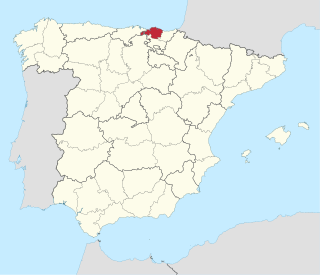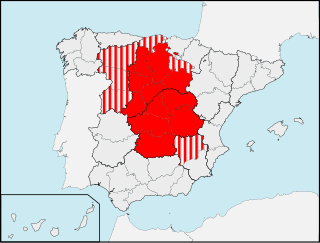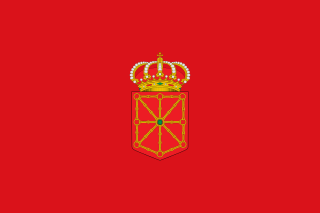
Ferdinand IV of Castile called the Summoned, was a King of Castile and León from 1295 until his death.
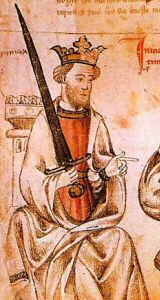
Sancho IV of Castile called the Brave, was the King of Castile, León and Galicia from 1284 to his death. He was the second son of Alfonso X and Yolanda, daughter of James I of Aragon.

Alfonso of León, Lord of Molina was an infante (prince) of León and Castile, the son of King Alfonso IX of León and his second wife Queen Berengaria of Castile. He was the brother of King Ferdinand III of Castile and León, and father of Queen Maria of Molina, wife of King Sancho IV. He became Lord of Molina and Mesa after his first marriage to Mafalda González de Lara, the heiress of those lands.

Lope Íñiguez succeeded his father Íñigo López to become the second Lord of Biscay in 1076.
Diego López I de Haro was the third Lord of Biscay, and also the ruler of Álava, Buradón, Grañón, Nájera, Haro, and perhaps Guipúzcoa: the most powerful Castilian magnate in the Basque Country and the Rioja during the first quarter of the twelfth century. He was a loyal supporter of Queen Urraca and he fought the invading armies of her estranged husband Alfonso the Battler on two, or perhaps three, occasions.

The Lordship of Biscay was a region under feudal rule in the region of Biscay in the Iberian Peninsula between c.1040 and 1876, ruled by a political figure known as the Lord of Biscay. One of the Basque señoríos, it was a territory with its own political organization, with its own naval ensign, consulate in Bruges and customs offices in Balmaseda and Urduña, from the 11th Century until 1876, when the Juntas Generales were abolished. Since 1379, when John I of Castile became the Lord of Biscay, the lordship got integrated into the Crown of Castile, and eventually the Kingdom of Spain.
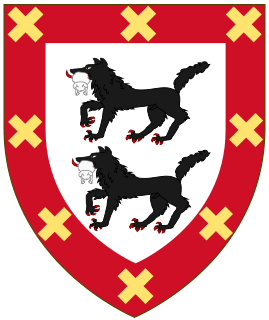
Lope Díaz II de Haro "Cabeza Brava" was a Spanish noble of the House of Haro, the sixth Lord of Biscay, founder of the municipality of Plentzia, and lord of Álava from 1252–1274. He was the eldest son of Diego López II de Haro and his wife, María Manrique. Lope was also a member of the Order of Santiago.

Diego López III de Haro. Was the eldest son of Lope Díaz II de Haro and of Urraca Alfonso de León, the illegitimate daughter of King Alfonso IX of León. Diego succeeded his father as the Lord of Biscay between the years 1236 and 1254.

Diego López V de Haro, nicknamed el Intruso, was a Spanish noble of the House of Haro and held the title of the Lord of Biscay which he took from the pretender to the title, John of Castile.

Juan Núñez II de Lara, nicknamed el Mozo or el de la Barba, was a Spanish noble, and head of the House of Lara in the service of the Kingdom of Castile.

Teresa Díaz II de Haro was a Spanish noble woman and a lady of Biscay, and one of five children of Diego López III de Haro, the Lord of Biscay, and Constanza de Bearne. Her maternal grandparents were the viscount Guillermo II de Bearne and his wife, Garsenda de Provenza. Her paternal grandparents were Lope Díaz II de Haro, also Lord of Biscay, and of Urraca Alfonso de León, the illegitimate daughter of King Alfonso IX of León. Amongst her siblings were Diego Lopez V de Haro and Maria II Diaz de Haro.

Nuño González III de Lara was a Castilian noble of the House of Lara. He was the lord consort of Alegrete, Vide, and Sintra and served as Alférez del rey for King Ferdinand IV of Castile.

María Díaz I de Harothe Good (1270–1342) was a Spanish noblewoman of the House of Haro. She was the daughter of Lope Díaz III de Haro who was assassinated by order of the king at Alfaro, La Rioja. She is best known for being the Lady of Biscay and for her lifelong battle against her uncle, Diego López V de Haro for the title of the lordship of Biscay.

Juan de Castilla y Haro, most commonly known as Juan el Tuerto, was a Spanish noble of the House of Haro and of the royal line of the Kingdom of Castile descended from Alfonso X of Castile. He was the Lord of Cuéllar from 1319 to 1325 and the Lord of Biscay from 1322 until his assassination by order of King Alfonso XI of Castile in 1326.

Lope Díaz de Haro was a Spanish noble of the House of Haro, the traditional Lords of Biscay. He was the firstborn son of Diego Lopez V de Haro, Lord of Biscay. Whilst he did not inherit his father's title of Lordship over Biscay, he is best known for being the lord of Orduña-Urduña and of Balmaseda. He further served as Alférez to King Ferdinand IV of Castile.

Fernando Díaz de Haro was a Spanish noble of the House of Haro. He was the second born son of Diego López V de Haro, the Lord of Biscay, and his wife, the infanta Violante de Castilla y Aragón, daughter of Alfonso X of Castile. Fernando became lord of Orduña and Balmaseda in 1322, after the death of his brother, Lope Díaz IV de Haro who died without leaving any descendants.
Maria of Portugal was a Portuguese royal, daughter of Infante Afonso of Portugal and his wife Violante Manuel.

Juan Núñez I de Lara y León, also known as "el Gordo" or "the Fat", was a Spanish noble. He was the head of the House of Lara, Lord of Lerma, Amaya, Dueñas, Palenzuela, Tordehumos, Torrelobatón, and la Mota. He was further known as Señor de Albarracín through his first marriage with Teresa Álvarez de Azagra.

María Díaz II de Haro was a Spanish noble of the House of Haro. She was the daughter of Juan de Castilla y Haro and his wife, Isabel of Portugal and was Lady of Biscay from 1334 until her death in 1348.



